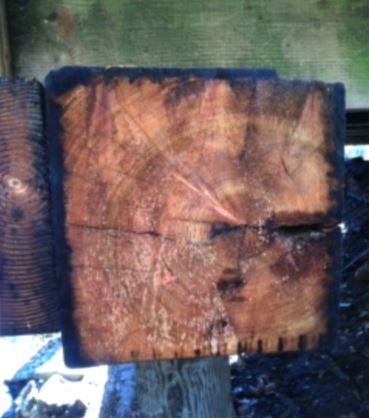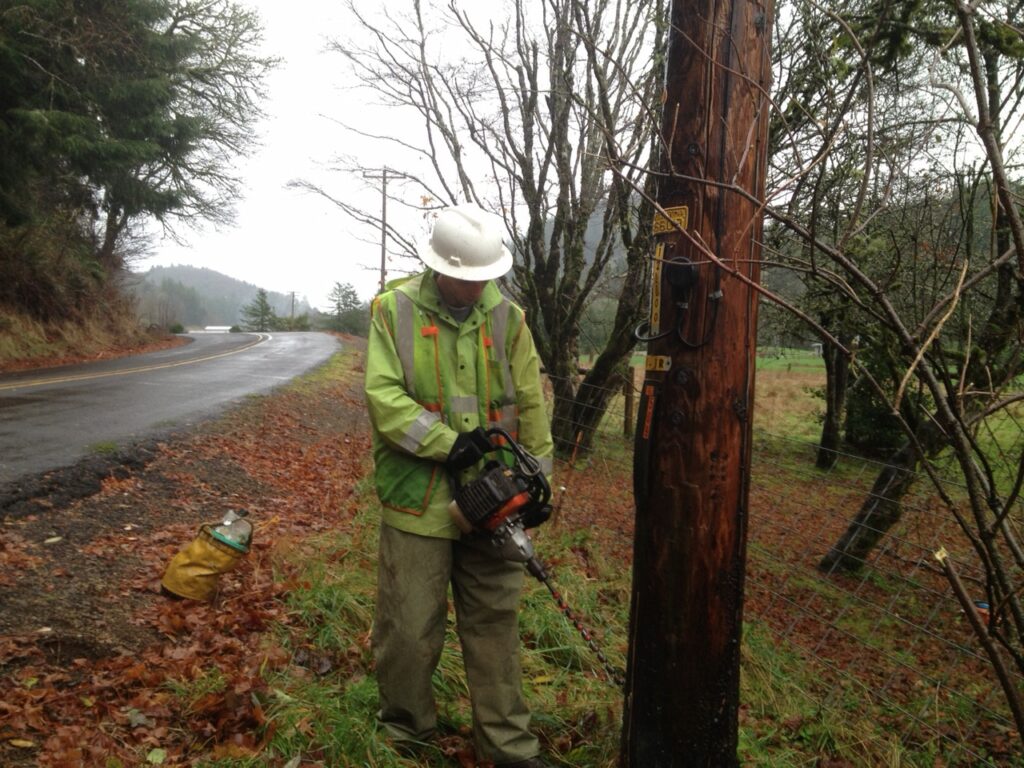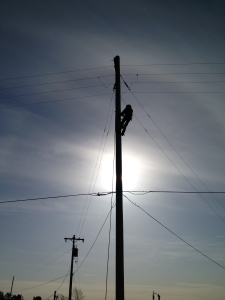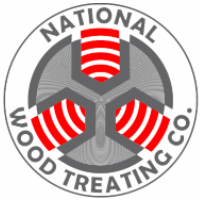Wood Inspection and Maintenance
Wood is one of our most useful natural materials. Wood has strength, relative longevity and many other desirable properties that make it ideal for such structures as utility poles, pilings, bridges and piers.
Wood must be protected, however, against destructive forces of nature that can lead to its decay and rot. Once decay sets in, the wood weakens, its lifespan is limited, and the structure eventually becomes unsafe.
While pressure treatment of wood is fairly routine, it only protects the outer inches and leaves the heartwood core treated and vulnerable. To be completely effective, a treatment must be applied that permeates and protects the heartwood.
At National Wood Treating Company, we specialize providing longer life to poles, pilings, bridges, and piers by regularly inspecting and treating the wood to either prevent or stop internal decay. We use a treatment of fumigants approved by the Environmental Protection Agency, the only treatment proven to be completely effective in controlling internal wood decay. In fact, our company founder was member of the research team that developed the treatment at Oregon State University.
Our treatment program works because it:
- Prolongs the service life of wood
- Helps identify members that require replacement or reinforcement
- Reduces costs for replacement and reinforcements
- Lessens disruptions in service
- Reduces unnecessary expenditure of our valuable natural resource-wood
What Makes Wood Decay

Basically, decay is caused by two major forces: fungi and insects. Pressure treatment of wood reduces the ability of fungi and insects to cause damage, but such treatment only protects the outer sapwood shell. Some of the most destructive decay is that which takes place unseen in the protected inner core, the heartwood.
Fungi enter wood as seed-like spores, through seasoning checks or cuts made during construction. Once into the untreated portion of wood, the fungal spores germinate upon finding moist, suitable conditions. Then root-like mycelium grows throughout the wood, causing decay and eventually rot.
Insects such as termites, carpenter ants, and buprestid beetles also commonly infest large wood products through the same pathways as fungi. They bore holes through wood, eventually leaving timbers and pilings hollow as a drum, with only a well-protected shell of pressure-treated wood.
As heartwood decays from the onslaught of fungi or insects, it becomes weaker. Poles and wood structures become unsafe, even though they may appear to be perfectly sound on the outside.
What Can Be Done

Before our treatment was developed, preventing or stopping damage from fungi or insects in heartwood presented a real challenge, since no proven cure was available. Heartwood is so permeable that only a very small molecule of a controlling substance can move through the infinitesimal spaces within the wood cells. Even water has a hard time moving through heartwood.
The solution? A vapor.
In our treatment, we flow liquid fumigant directly into the wood through drilled holes. The vapor from the fumigant permeates the wood in both upward and downward movement, eliminating fungi and insects and providing internal protection that lasts from eight to 15 years.
We maintain this protection by re-inspection and treatment at five to ten year intervals.
How We Work

When you call us about treating poles, pilings, bridges or piers, we put together an estimate that describes the treatment needed and the cost. On more involved jobs, we visit the site to give you a more accurate bid. Once the bid is accepted, we schedule a crew to complete the work.
Our maintenance service includes both inspection and treatment and rarely disrupts operations in your facility. We inspect visually first then drill holes into each pole or member. The drilling process serves as an excellent inspection method, yielding information such as shell thickness and decay pocket size.
If reinforcement is needed, we note that in our records. If a pole is too far decayed to save, we reject it and recommend replacement. In many cases, less than 5% of the poles we see require costly replacement.
We install the appropriate fumigant into the drilled holes and seal the holes with treated wood plugs or plastic. All wood members-except rejects-are treated, either to stop decay already present or to prevent it from starting. Information on the condition and treatment of each piece is recorded into our field computer units and later transferred to our main computer. We then tag the structure to show the date of inspection and treatment. Once the job is completed-or at regular intervals on an ongoing job-we present you with a detailed report on the condition of each pole, pile, or timber as well as a summary of the entire project.
Information includes:
- Specific wood members inspected
- Specific wood members treated with fumigants
- Specific wood members treated with insecticides
- Identification of wood members with decay
- Location of decayed wood members requiring reinforcement
- Location of wood members due to rot
- Other defects in wood members
How We’re Qualified
President of National Wood Treating Company is Guy G. Helsing, who was a member of the research team at Oregon State University that developed this method to control wood decay. He holds both B.S. and M.S. degrees in forest products with emphasis on wood preservation.
Helsing is an expert witness on wood protection and preservation, use of wood in harsh environments, and the decay of wood. He is also the author or co-author of numerous publications on wood, including: Control of Wood Rot in Waterfront Structures; Marine Wood Maintenance Manual: A Guide for Proper Use of Douglas Fir in Marine Exposes: Wood Pole Maintenance Manual: Inspection and Supplemental Treatment of Douglas Fir and Western Red Cedar Poles.
Additionally, all our crew members have completed an intensive training program and are licensed to handle the restricted-use chemicals required in our treatment. Experienced and conscientious, they perform quality work in a timely manner.
How to Contact Us
At National Wood Treating Company, we offer our services both nationally and internationally. We are currently licensed and have done work in Alaska, Washington, Oregon, Idaho and California.
Contact us immediately to implement inspection and maintenance of your wood structures. Our comprehensive treatment program will protect your wood members from further deterioration and also identify those that need reinforcement or replacement.
Guy Helsing
[email protected]
541-928-5005
National Wood Treating Co.
P.O. Box 3418
Albany, Oregon 97321
